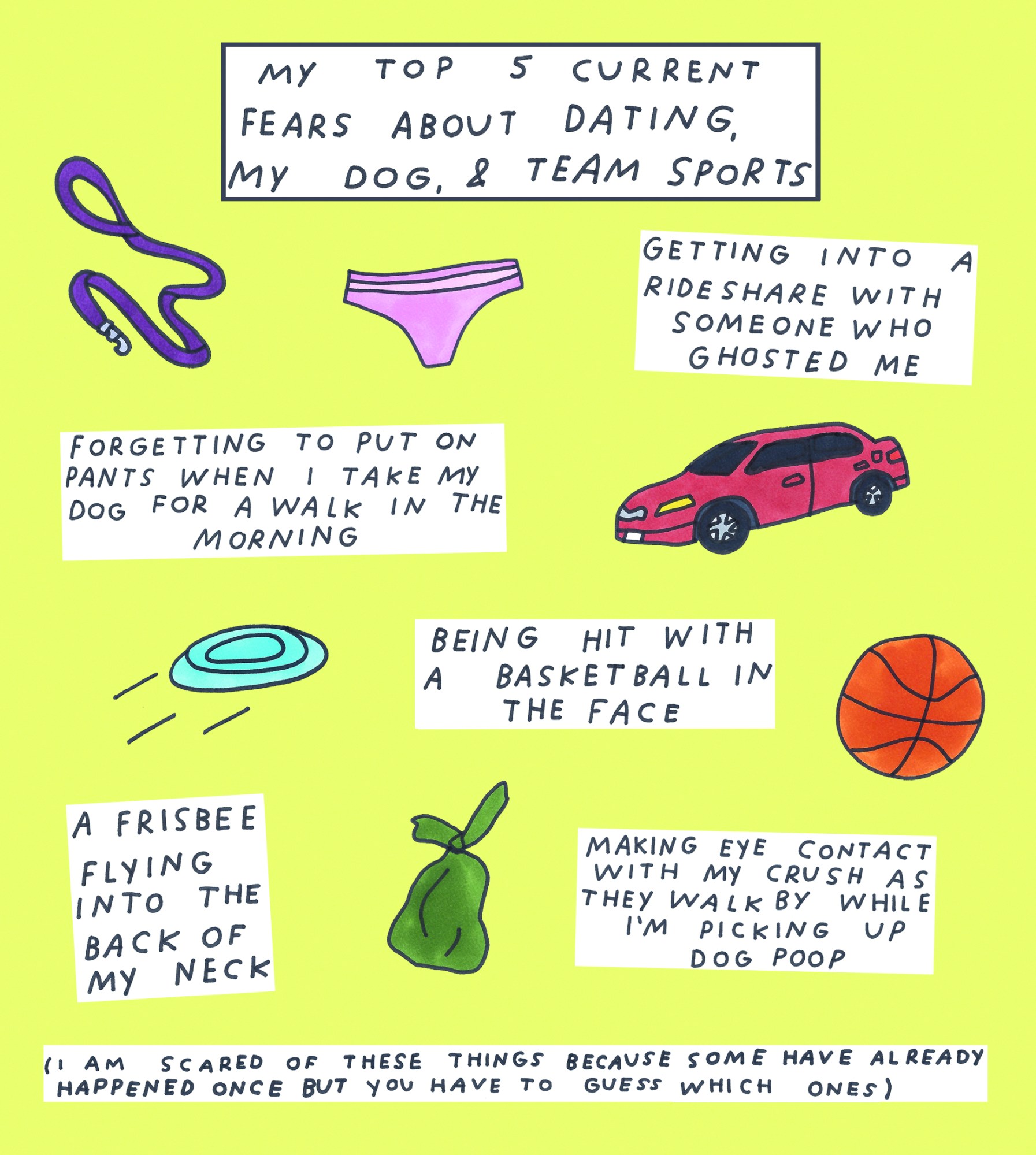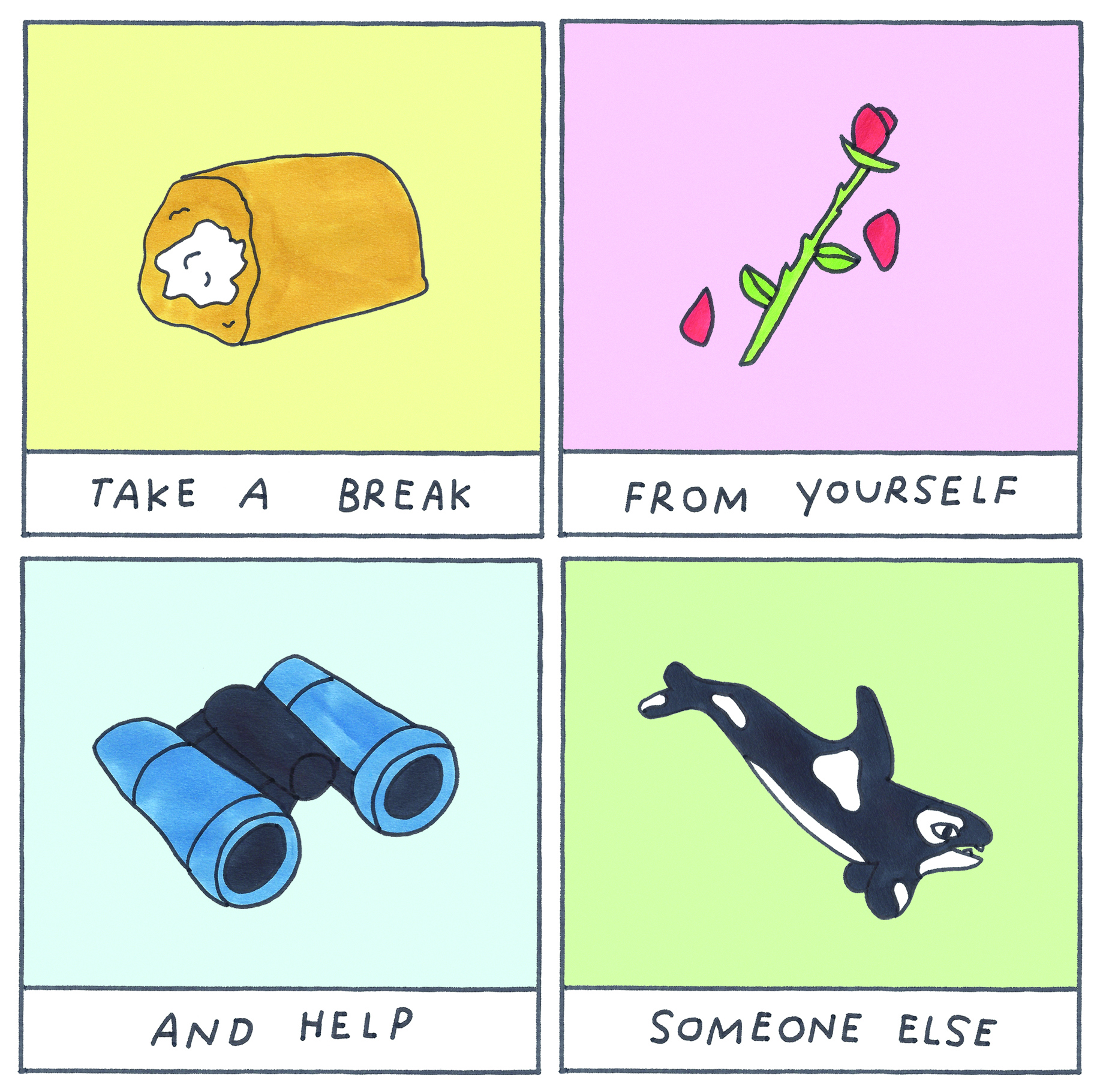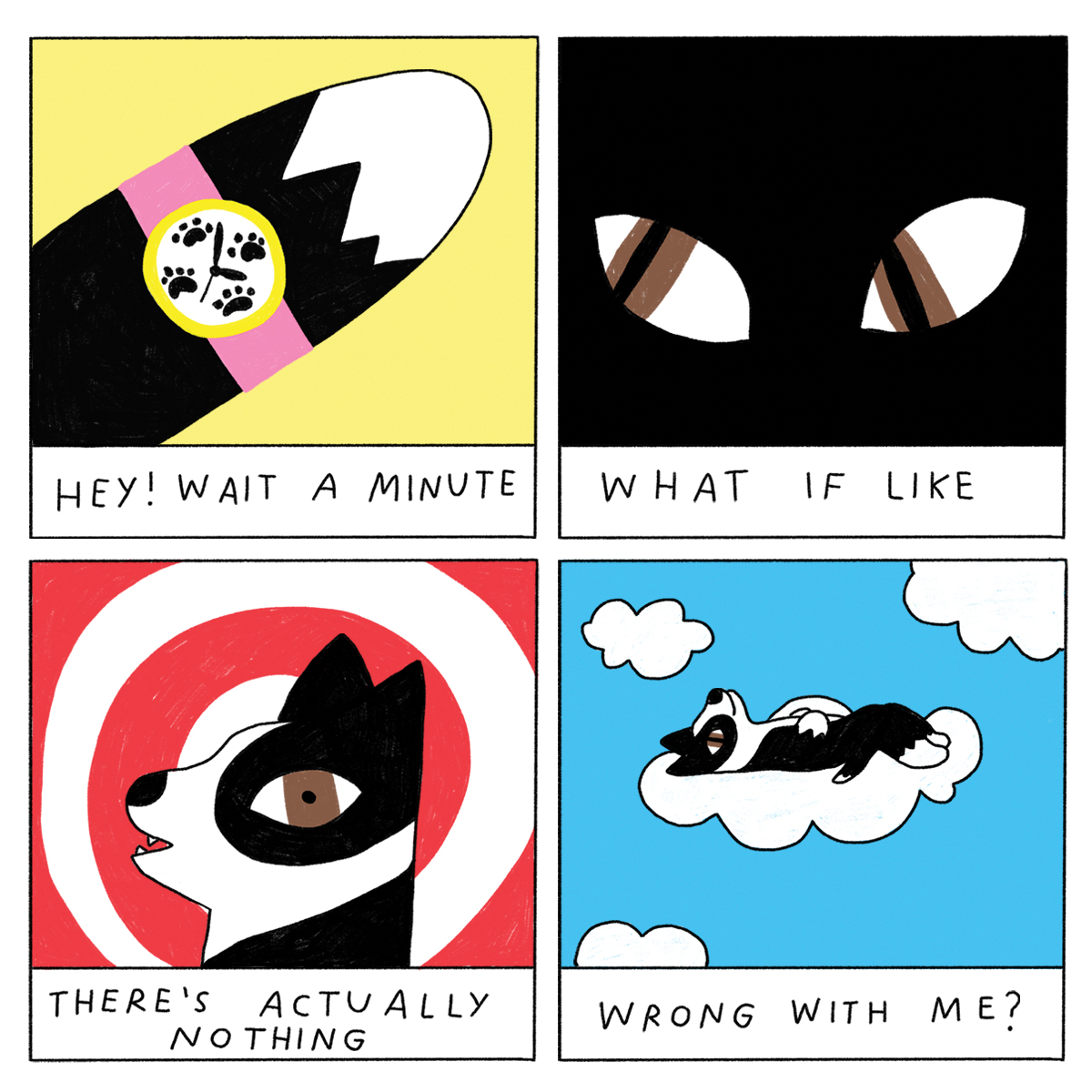For nearly 10 years, illustrator Grace Miceli aka @artbabygirl, has been making clever illustrations and sharing them with her loyal followers. The drawings are composed of doodled cereal boxes, bags of chips and CD covers updated with sarcastic commentary on life. Now, she’s releasing her first book How to Deal: With Fear, Failure, and Other Daily Dreads, which is a “‘fight or flight’ manual for life (the fake one you live on the Internet and the one you actually live)” designed to help you both cope with challenging mental health days and enjoy the good ones.
Grace started illustrating in college as a playful way to escape reality and draw on nostalgic references from her youth. In the years following, she became a part of the vibrant art communities in both New York and Los Angeles, spending her time curating art shows with other young women artists. All the while, she kept up her illustrations, which have now been published by the likes of The New Yorker. And though they’re still playful and funny, Grace’s recent works explore serious mental health topics like anxiety, depression, fear and the nature of growing up — reminding us that even when we’re struggling, we’re not alone.
As we close out Mental Health Awareness Month, we sat down with the illustrator to hear more about her colourful new book and her own mental health journey.

How did you come up with the title and focus of your book?
Originally, I wanted to make a book about fear. The first self-help book I ever read was called Feel the Fear and Do It Anyway by Susan Jeffer. With so much of my work, fear is kind of the thing that’s always there, right? It’s what pushes me. So that was the idea. My agent suggested zooming out, having a bit of a broader approach and How to Deal just popped into my head. Honestly, it’s sort of inspired by that Mandy Moore movie, How to Deal.
You mentioned that you are surrounding yourself with people that also make work about feelings. What are some of the feelings you explore in this book, and what are some of the experiences you tried to capture?
What I’m trying to figure out is how to be someone who does not freak out about everything all of the time. Through therapy, through reading other self-help books, through friendships, through relationships, I’ve come to learn that it doesn’t have to be this hard. For so long I identified as someone that wasn’t that emotional, which you know, is not a thing. I was just pushing everything down. So I think the act of expressing vulnerability and speaking truth to what’s actually going on for me is very important. And I get so inspired by other artists that do the same thing.
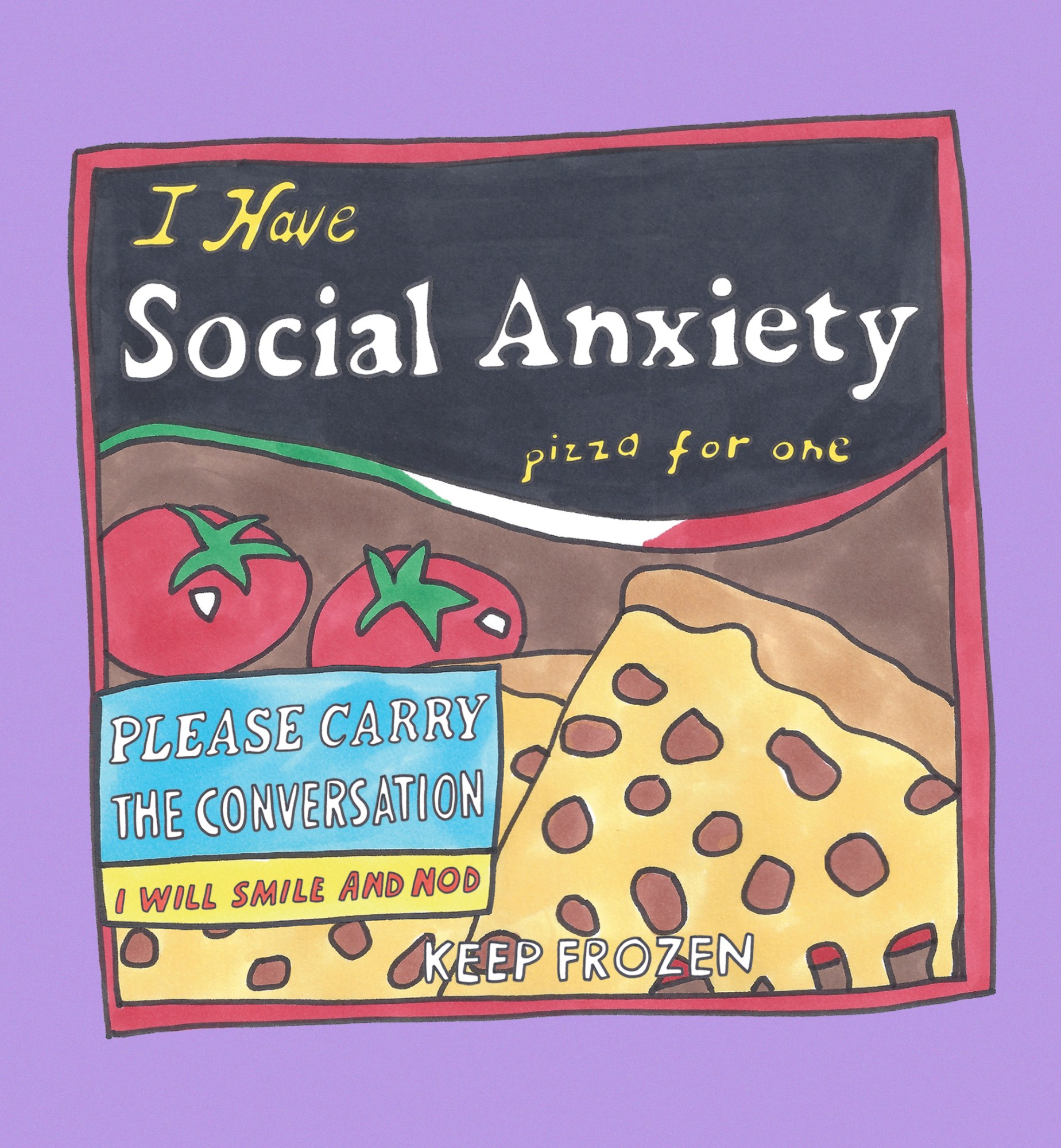
How has your work evolved since you got started? Stylistically, it used to be more youthful or playful, whereas now it’s maybe a little more serious, but still humorous underneath. Was that intentional?
I think I just kind of grew up. I started to interrogate myself and how I was living in what I was doing. I stopped drinking and I went back to therapy. My trajectory and my interests and the types of things I was thinking about shifted. It took a bit of a turn.
I started illustrating at the end of college, and for five or six years, I was just using illustrating as a way to escape and be playful. I think I was trying to figure out my younger self. There were more youthful, nostalgic references… I don’t think I was so aware of it, but there’s something comforting about exploring things visually, [and] being in a world that is connected to your youth. So I think there was part of me that was just hiding in it, because it felt safe and comforting, but also trying to figure stuff out through that visual language. My work was playful. It made light of more serious things. It was a little more sarcastic. I wasn’t ready to embrace sincerity or honesty. I was very uncomfortable with those things before. I was partying all the time. So I think my work was not… it was me of course, but I wasn’t really aware of everything that was going on below the surface.
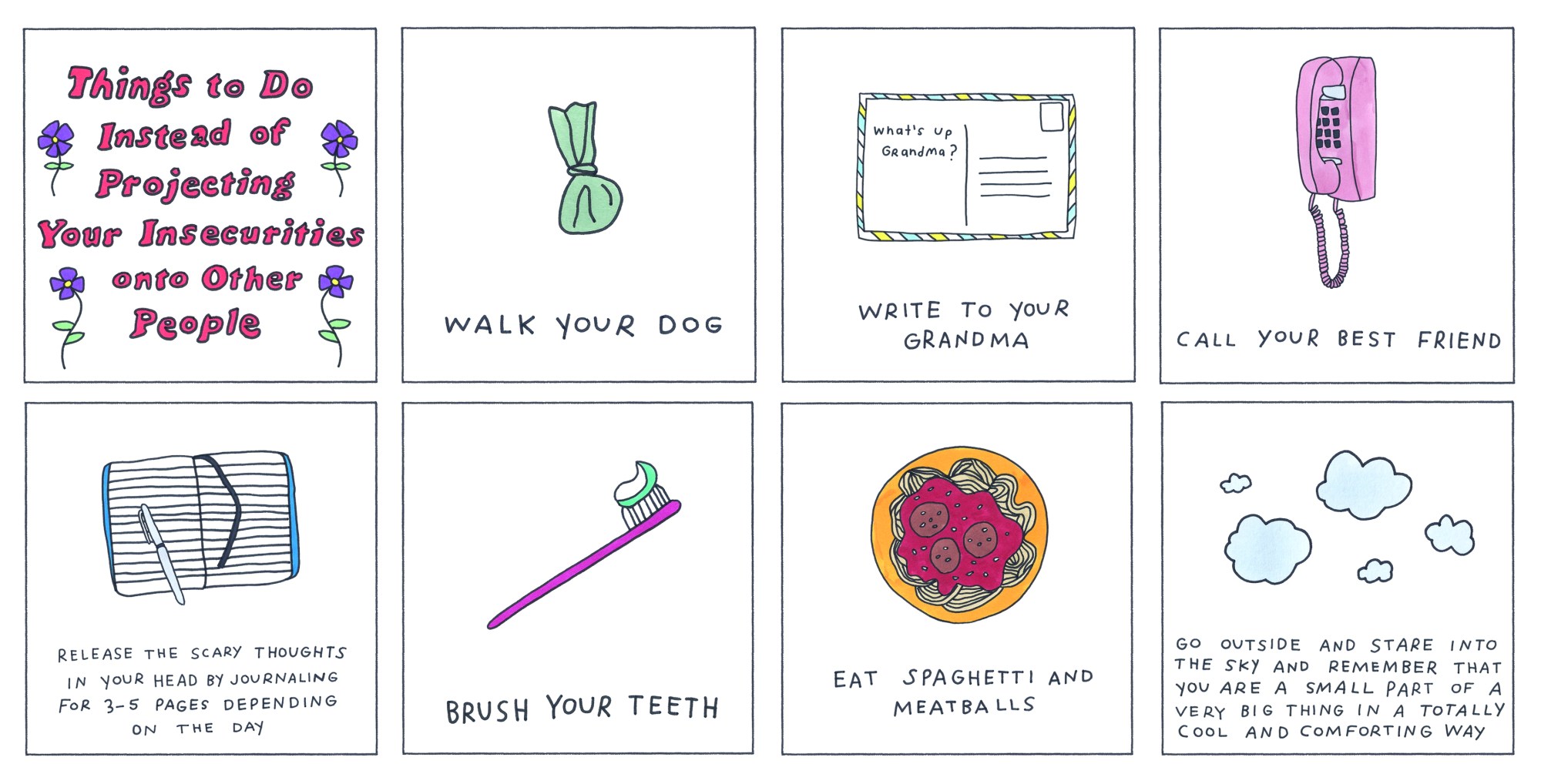
I can see that. I know that you used to be part of a big art community. Is that still something that’s important to you and your work?
Certainly. I mean, I think it’s shifted, right? It’s like when I was curating lots of shows and was in my early-mid twenties, I identified as a young artist. So I was seeking out other artists who were trying to establish their careers and trying to claim space in the traditional art world. And then of course, I realised over time that that’s maybe not the world I care to be a part of. It’s great to be in a show in a gallery, but that’s not the art that I really want to create. So my art communities have shifted over the years. Now I’ve found other illustrators who make art about their feelings. It’s always been so important to me to have peers. I can’t imagine being a freelancer without a community of people to talk to. My work is evolving with the people I surround myself with.
How did your sobriety impact your work?
It caused me to finally have to deal with all my stuff. I was able to do that through my work. Now I have to be more active and I have to show up more, which is great. I’m grateful to have to do that to be like: this is me. Like, this is fully me. I’m here as my real self. Things are overwhelming at times, but I feel very confident that this is how I want to live my life.
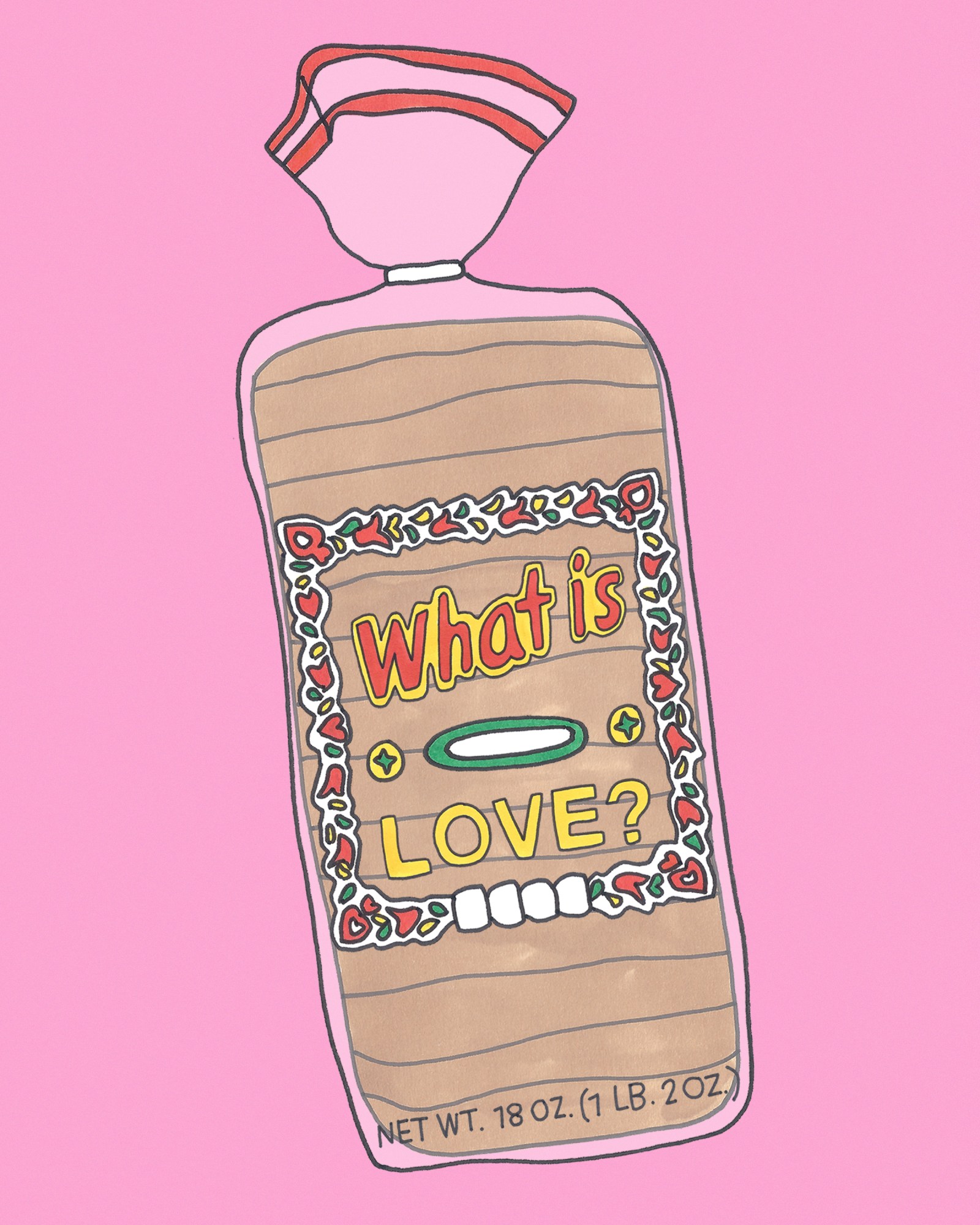
How does it feel to have your book out during Mental Health Awareness Month?
That’s something I think about a lot. The first line and the introduction of the book is like, I am not a mental health professional. I am just a person who’s been lucky enough to afford therapy and to read all these books. The book really is full of questions. And I think that questions are what help us get awareness. The conversation around [mental health awareness] has changed so much. There’s so many more people talking about their mental health or openly taking medication at such a greater scale than when we were younger.
I think it’s so cool that this book can be a part of this larger conversation. And the way I have chosen to communicate is through illustrations and comments. That’s how I’m communicating my experience as a person.
What do you hope people take away from it?
I hope that when someone picks up this book and reads it that they feel less alone in the scary or overwhelming thoughts or feelings that they experience on the day-to-day. What is so beautiful that I keep learning is that so many of our personal experiences that we’re ashamed or embarrassed about are so, so universal. And that just sharing that, it can really help someone that maybe doesn’t have people in their life that they feel safe opening up to.
